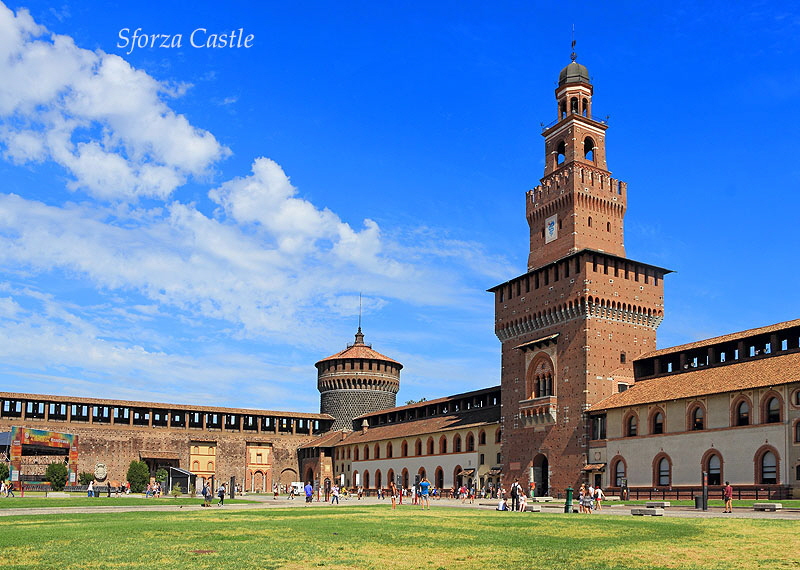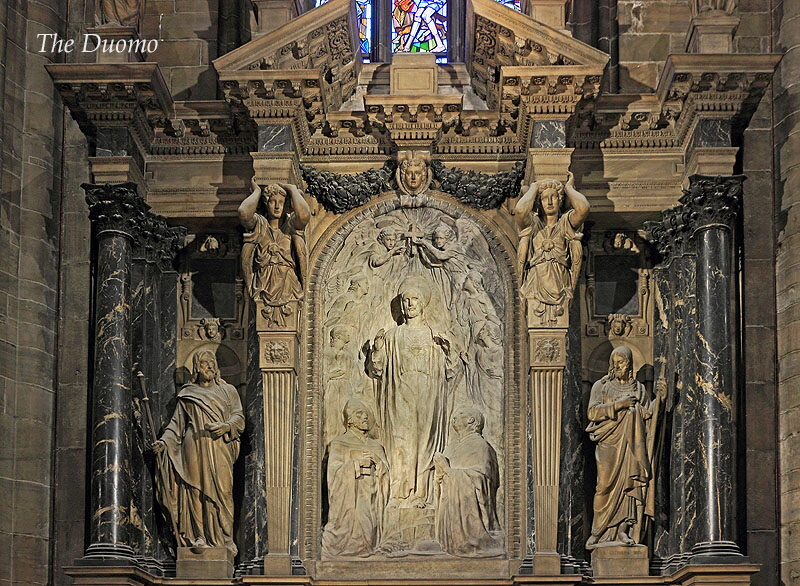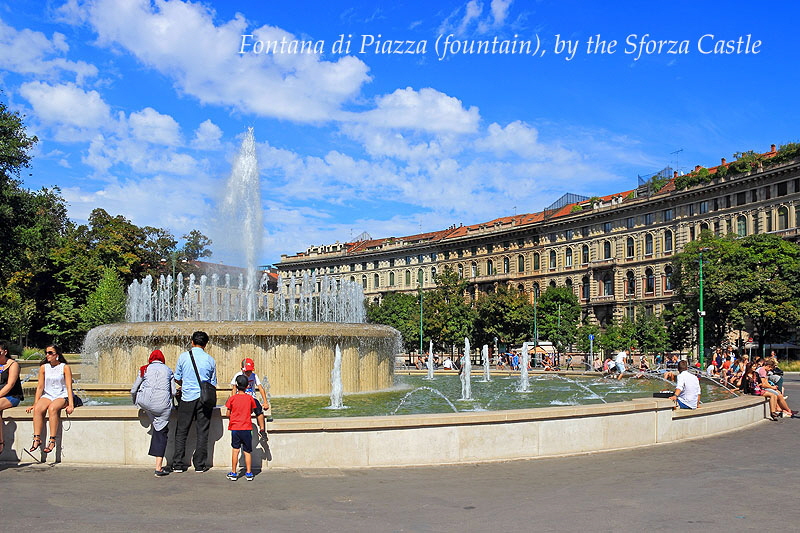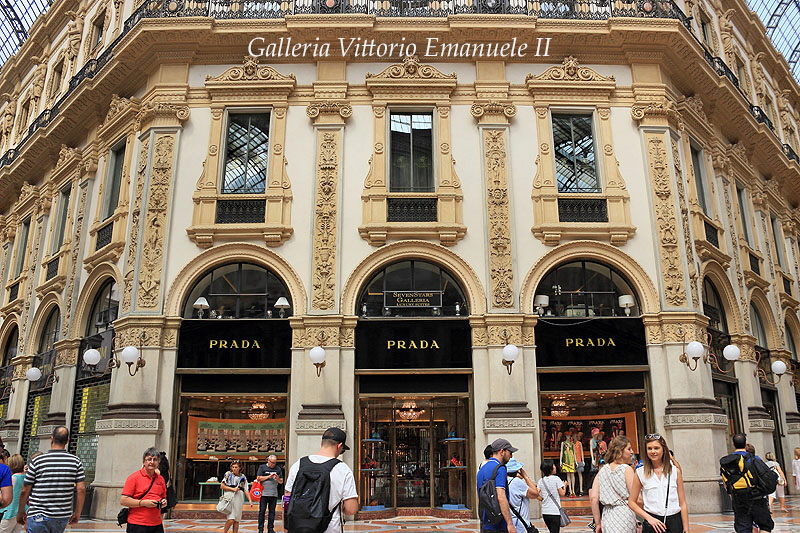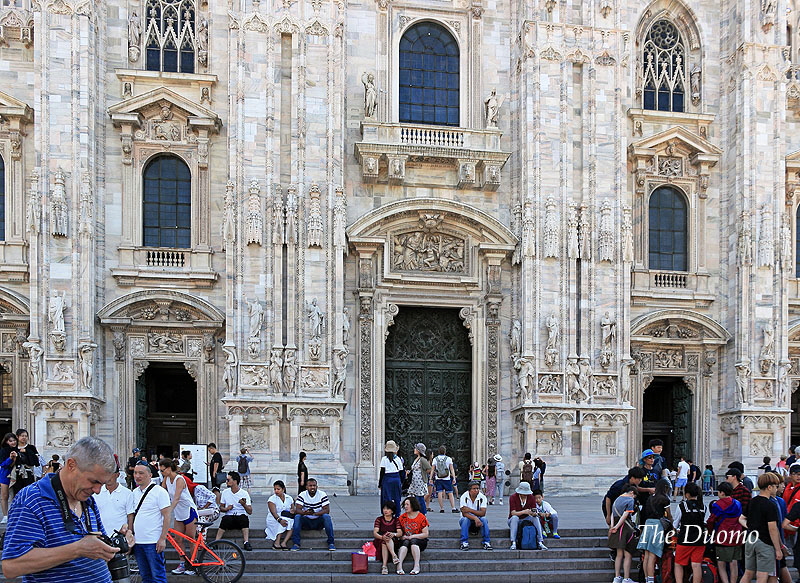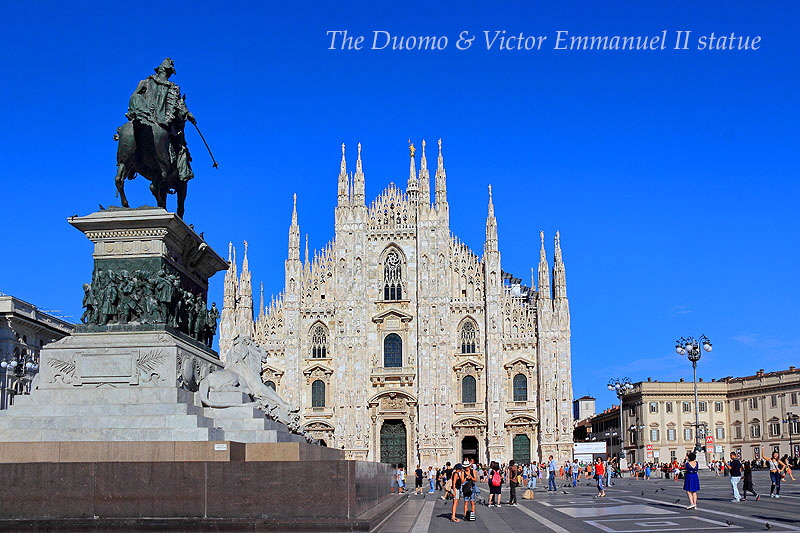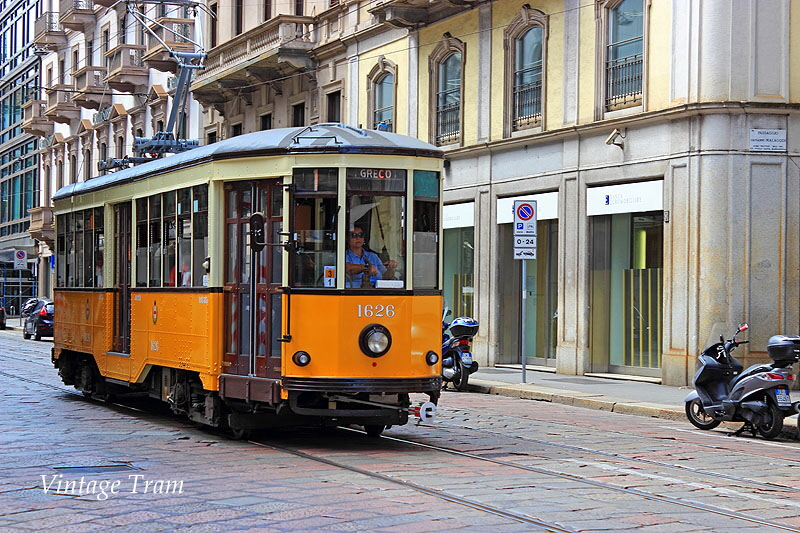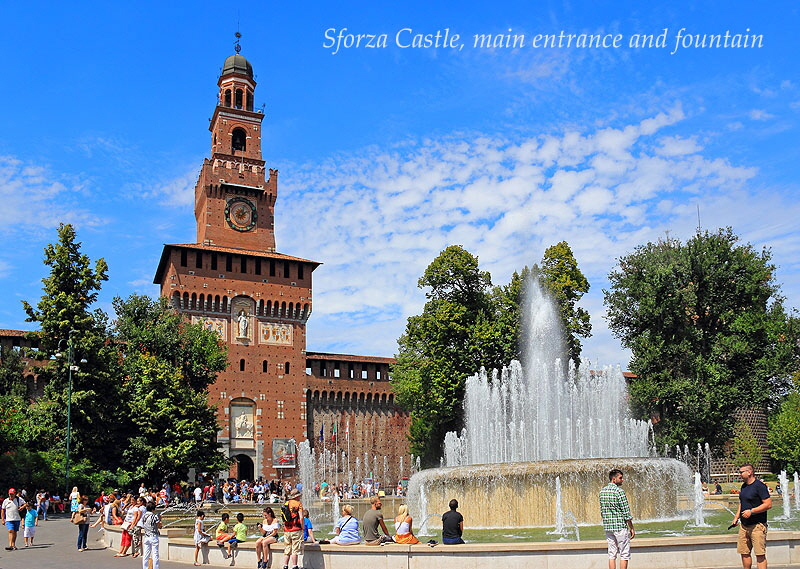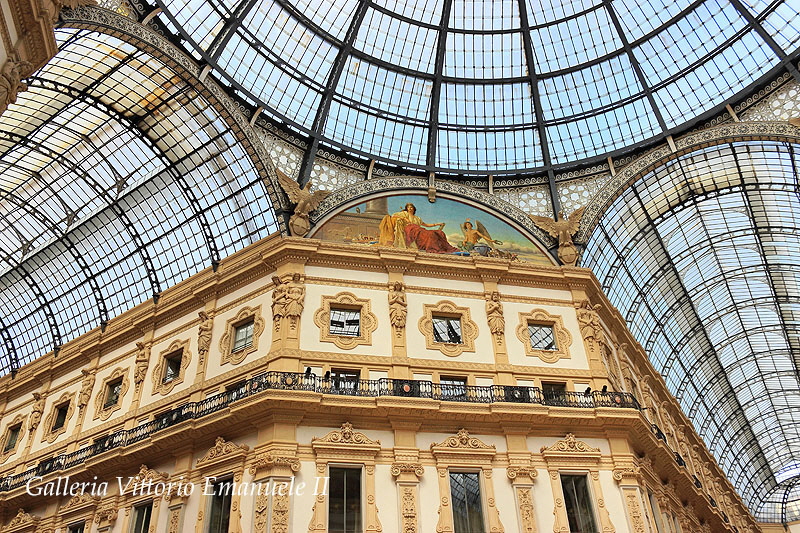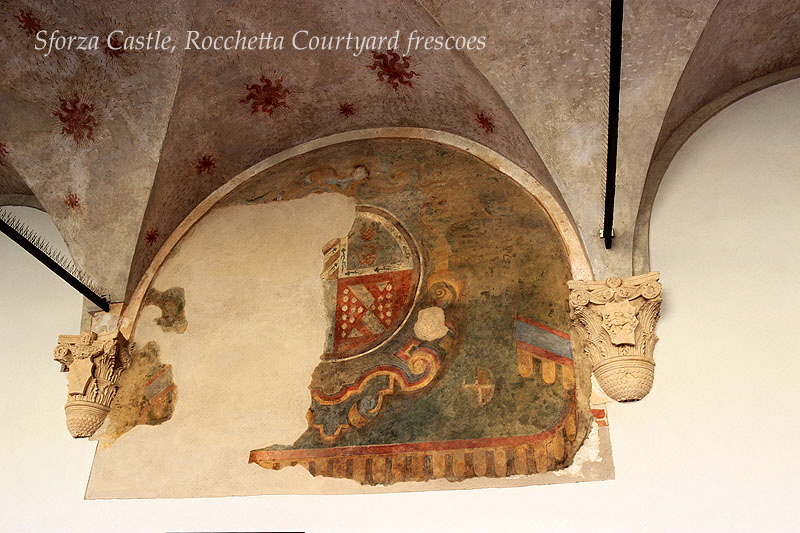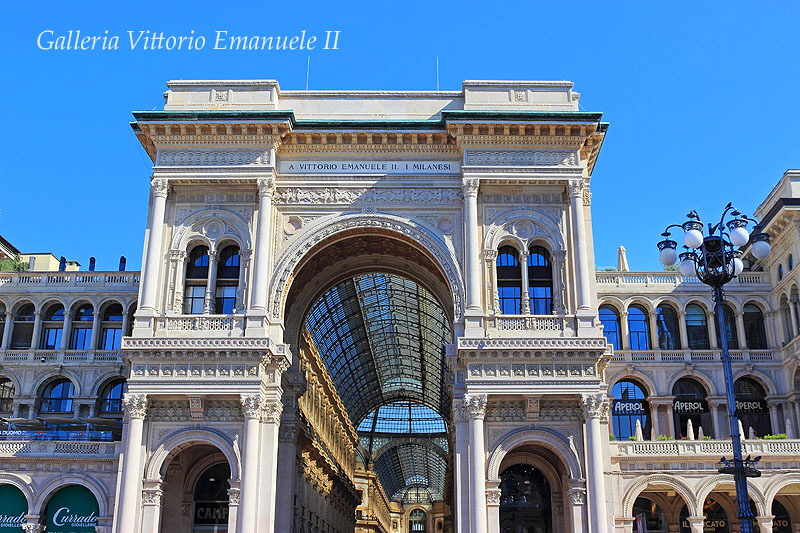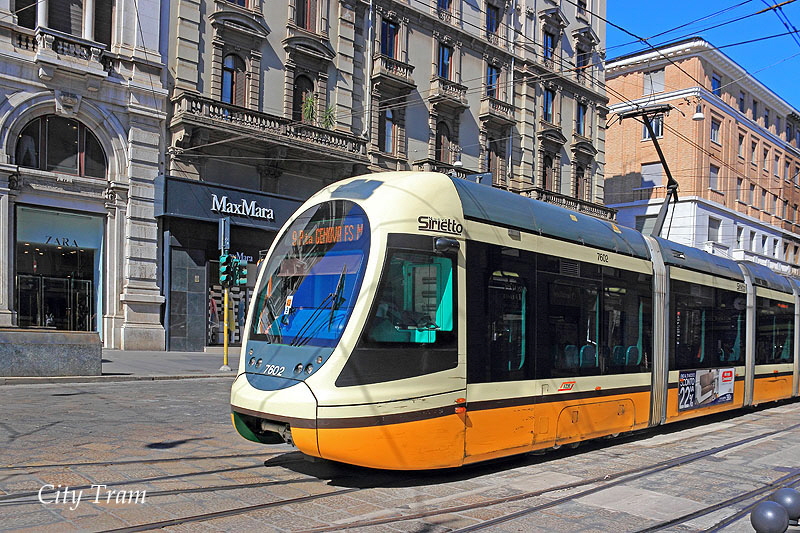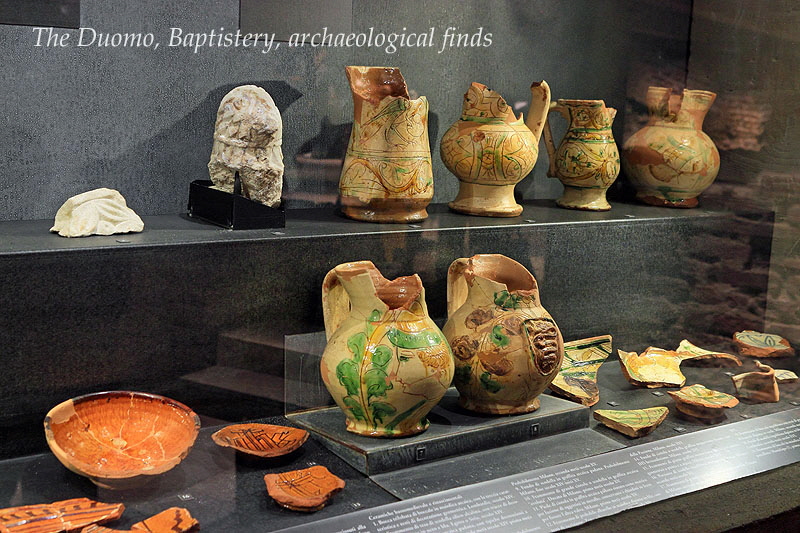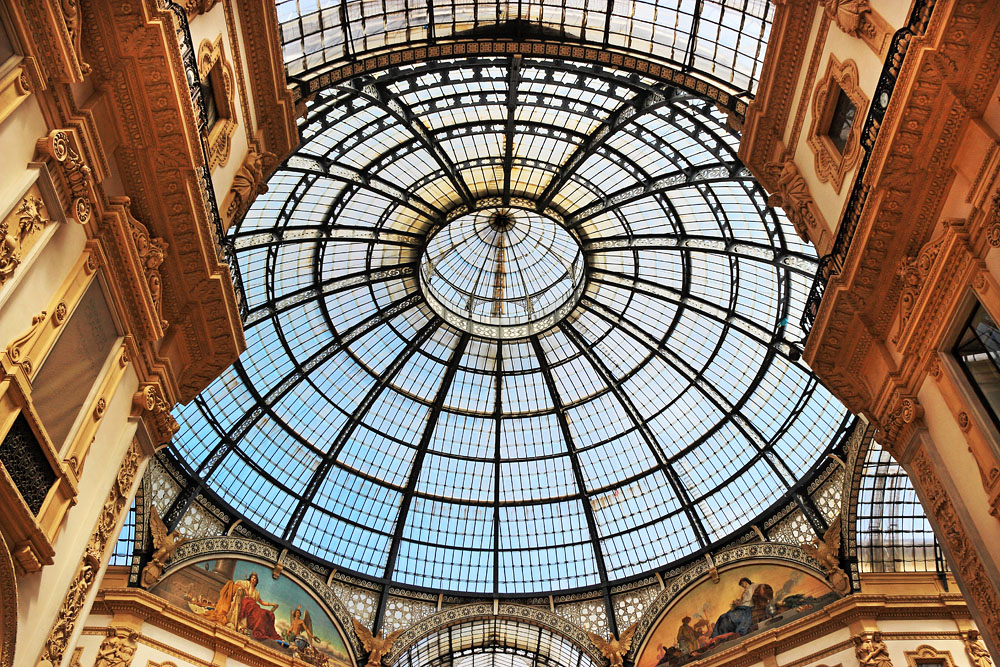
Taking a break in Milan
Italy’s fashionable city
It was bad timing. It was early August, the peak of the tourist season. With temperatures soaring just over 30 degrees, it still didn’t deter me from visiting Milan for a short break en route to the cooler parts of Italy’s lakes and mountains.
Milan may not be on the top of the list of Italian places to visit. It may be more of an industrial and financial hub, yet is renowned to be the fashion capital of northern Italy and the location of some of the most important landmarks. So to leave Milan out of the great cities would also be a mistake.
It’s a big city, yet a very walkable one. And if your feet ache, it’s easy to hop on and off a modern or historic old tram with wooden seats. If you’re here for a short visit, it’s best to decide what to see and stay at a hotel nearby, as many of the wonderful sights are all close to each other.
Victor Emmanuel II monument
Piazza Del Duomo
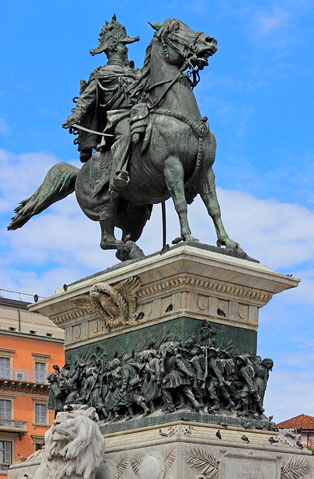
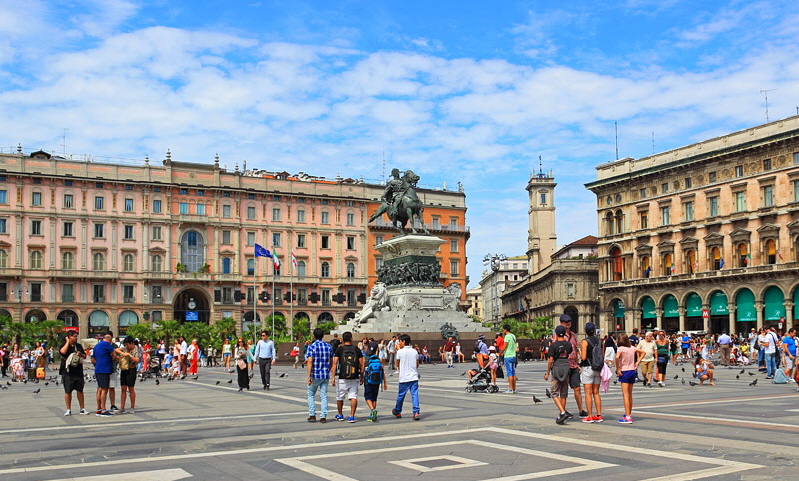
Armed with a map, good walking shoes, and a water bottle, I was off early morning venturing into the city’s epicentre and main square - Piazza Del Duomo. It’s the place to come and begin the days sightseeing, watch the city go by, or just hang out. The large traffic-free square is surrounded by arcades, shops, restaurants, and monuments.
The Duomo

An architectural marvel and the number one attraction of course is the Duomo. This is no ordinary cathedral. Whichever angle you look at it, the huge magnificent facade and white spires of this gothic-style building cannot fail to impress. Luckily, I was there early, to be one of the first few in the queue to pay just a fiver to enter.
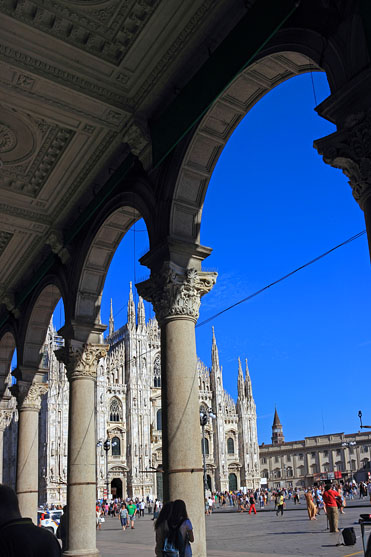
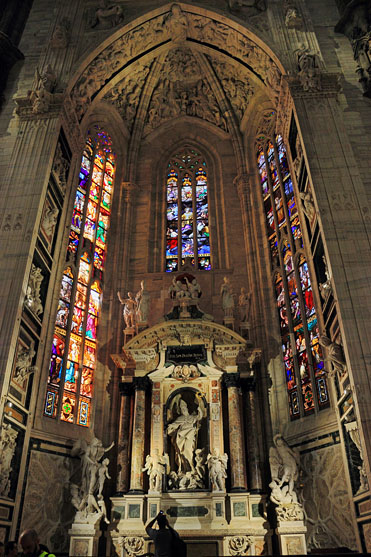
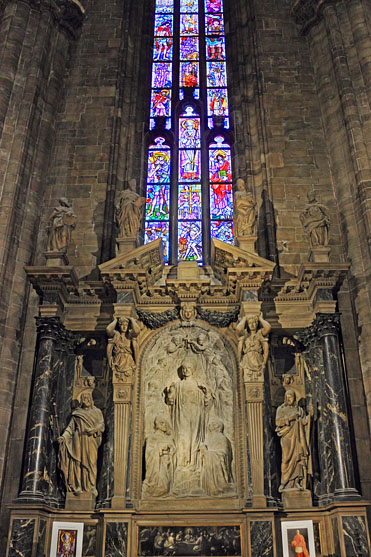
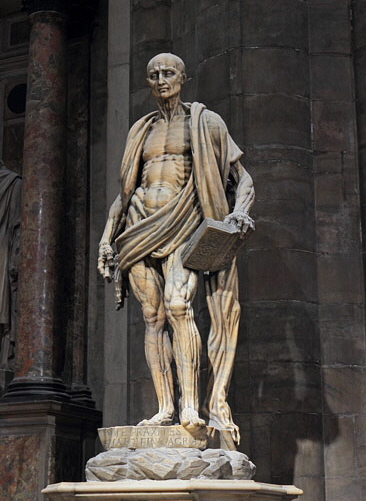
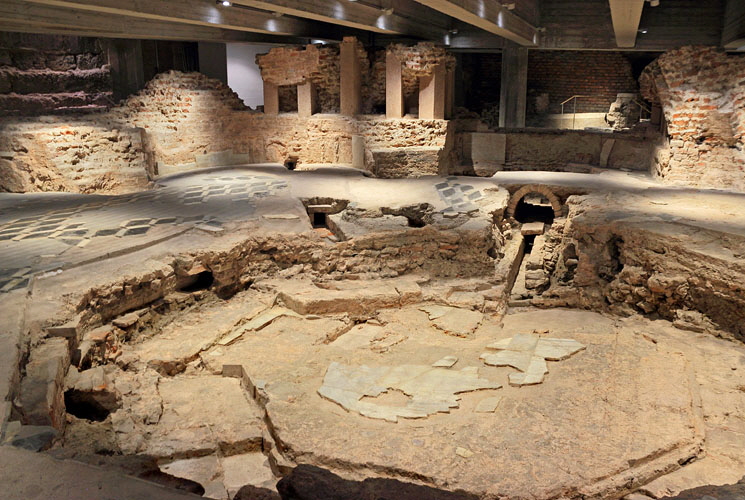
St Bartholomew ‘skinned’
Remains of the Baptistery
The cathedral which took six centuries to build began in 1386 and was completed in 1965. It is the second largest in Italy (after St Peter’s in the Vatican), and the fourth largest in the world. So large, that 40 or so giant columns reach up to the nave to hold the structure in place. Both inside and outside contain nearly 3500 statues and gargoyles, beautiful stained glass windows, and works of art. Unfortunately, the rooftop entrance was temporarily closed the day I arrived, and had to settle for viewing the inside only with its numerous statues and altars. One significant 16th century, macabre looking marble sculpture is of ‘St Bartholomew Skinned’ executed for his Christian faith. I was glad to be there early, as after an hour of exploring, the place began to pack with visitors. In the building’s basement is also remains of the ancient Baptistery, and contains many archaeological finds and artefacts (note, there is an extra fee for visiting the Baptistery).
Galleria Vitorio Emmanuel II
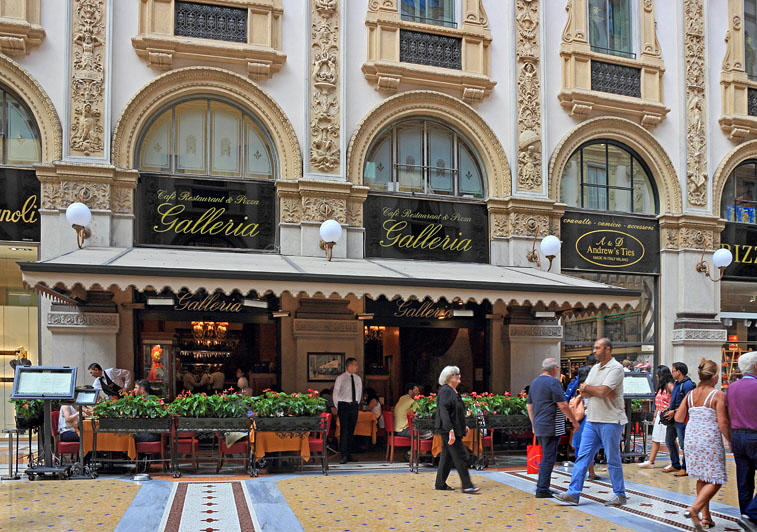
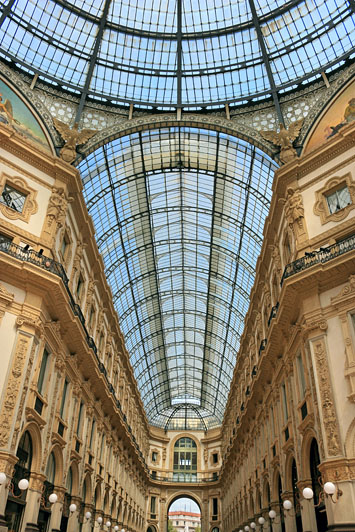
At the piazza, opposite the cathedral is the imposing statue of Victor Emmanuel II - the first king of united Italy. And Italy’s oldest shopping gallery is also named after the king.
The extraordinary Galleria Vitorio Emanuele II was constructed in 1865. Its main entrance is through the archway from the Piazza Del Duomo. The four storey gallery with intricate mosaic floors, paintings, wall carvings, relief sculptures, and the stunning central glass dome are a display of exquisite works of art and architecture. It was busy as I had just left visiting the Duomo, so had to make a second visit, early morning, to appreciate its magnificence. Oozing with Milanese wealth and style, the gallery is mainly a shopping spree for those into high-end emporiums and brands like Gucci, Prada, and Armani.
Among the tempting places to eat are also some of the oldest established restaurants such as Cafe Biffi opened in 1867, and the Bar Camparino - where you can taste the iconic Campari and Soda with a snack to accompany - pricy, but worth splashing out.
Cafe Biffi
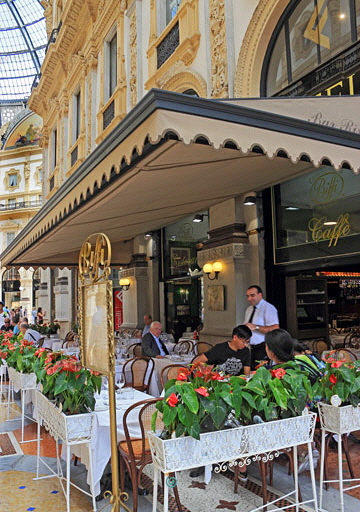
Piazza della Scala

Leonardo da Vinci monument
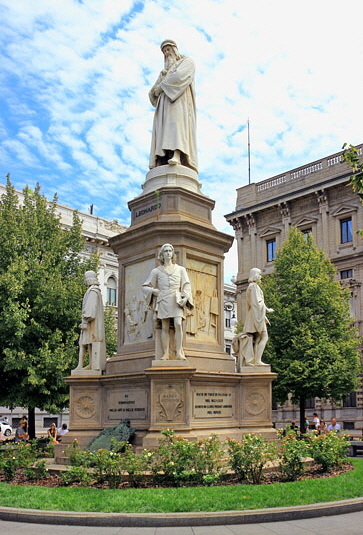
Via Dante
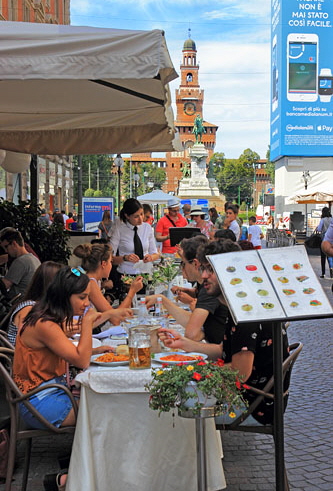
If you can fight the urge not to leave the Galleria, proceed to the far end, which opens onto the Piazza della Scala, another traffic-free spot. This pretty square is surrounded by grand buildings - the 18th century Scala Theatre (opera house), City Hall, once a palace built in 1557, and the palace-style facade of the Banca Commerciale Italiana. In the centre of the piazza is a circular green space with a monument to Leonardo da Vinci. Despite the gathering crowds,
I managed to find a shady spot under the trees to relax and admire the views.
From Piazza della Scala, I cut across a side street, pausing for a quick ice cream by the roadside, and headed towards Via Dante. This grand lengthy pedestrianized street is teeming with shops, small boutiques and restaurants. With the inviting aromas of food wafting in the air, I could not resist stopping for a quick lunch at one of the open-air restaurants. From my table, in the distance, I could see the monument to Giuseppe Garibaldi, the 19th century military leader, and beyond, Sforza Castle (Castello Sforzesco).
Garibaldi monument
Sforza Castle, Filarete Tower
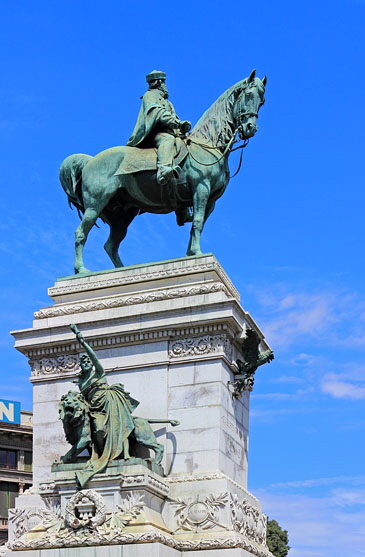
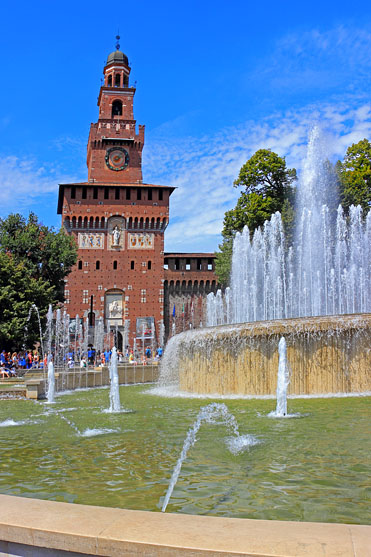
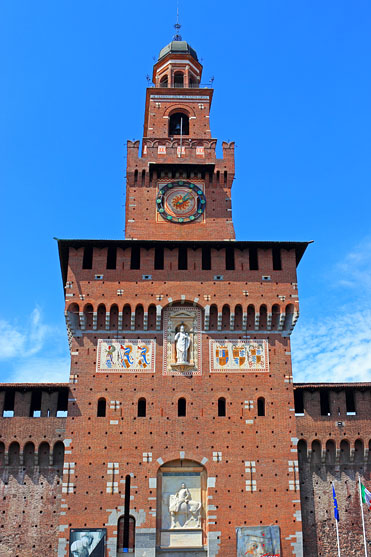
Originally built as a fortress in the 14th century, Sforza Castle is one of Milan’s most notable landmarks and one of the largest medieval citadels in Europe. Today, it houses several museums and is referred to as the ‘castle full of art’.
Walk around the circular piazza with a beautiful water fountain (Fontana di Piazza Casello) and you’re faced with the imposing Filarete Tower (La Torre del Filarete), its main entrance. What you see today is the 1905 reconstruction which includes a bell tower and clock. The tower and walls also have coat of arms of biscioni - depicting a large serpent devouring a human, which became a historic symbol of Milan. As my time was limited, I left out visiting any of its museums, instead strolled around the castle, taking in the large Rocchetta Courtyard which has remains of some ancient ceiling frescoes, and surrounding brickworked fortifications.
Biscioni coat of arms

Sforza Castle, Rocchetta Courtyard
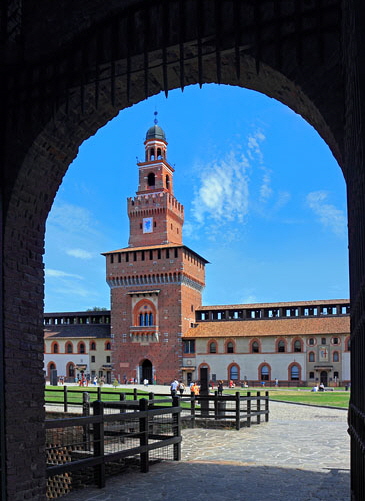
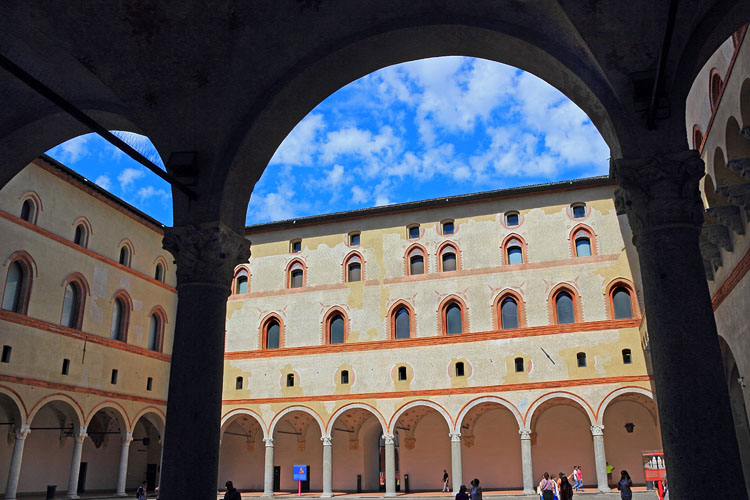
It may come as a surprise to know that Milan has a canal system - the Navigli Canals district. They connect with rivers that meander as far as Lake Maggiore and Como. These 16th century waterways were constructed mainly for transporting goods and were also used to carry the marble slabs used in the building of the Duomo. The design and engineering skills of Leonardo Da Vinci also made its mark in the canal’s construction.
Navigli Canals
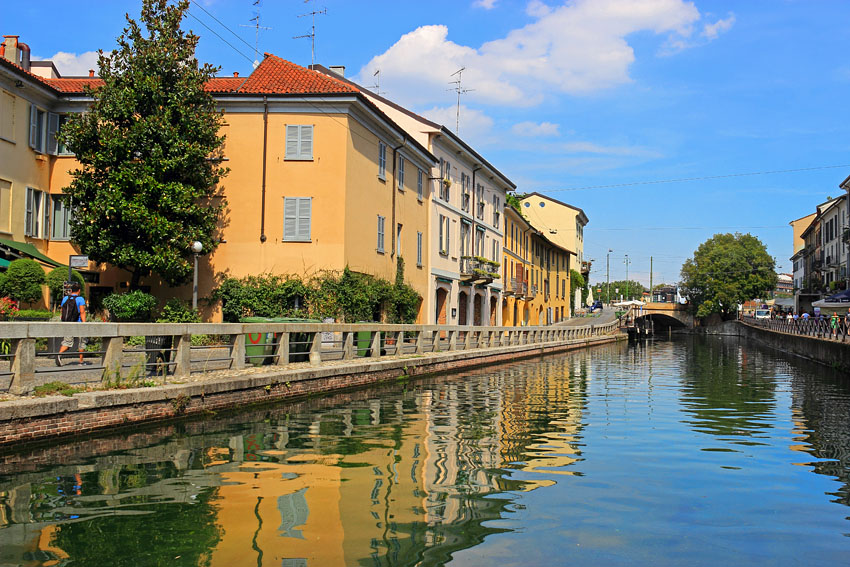
The best way to explore this area is to join a walking tour or cruise. It’s a good way to see another old part of the city and Milanese lifestyle. From the Duomo, it takes about 45 minutes on foot to reach the Navigli Canals, instead, I opted a for a short tram ride. The one hour cruise itself was not particularly interesting, but it was an opportunity to see the typical colourful canalside house, bridges and churches on the way, and was a good diversion from the city centre. As the evening turns to nightfall, the canalside also opens up its bars and restaurants inviting you in.
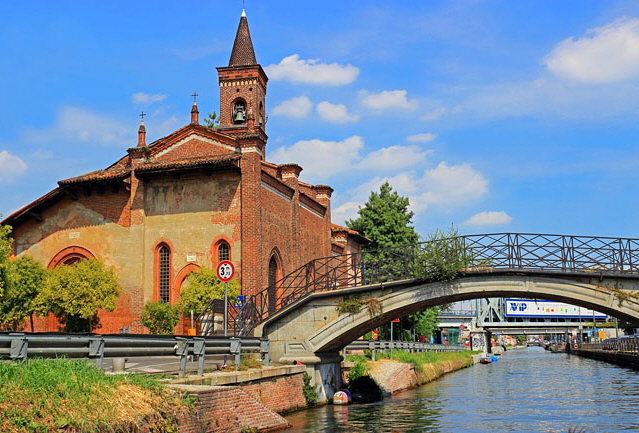
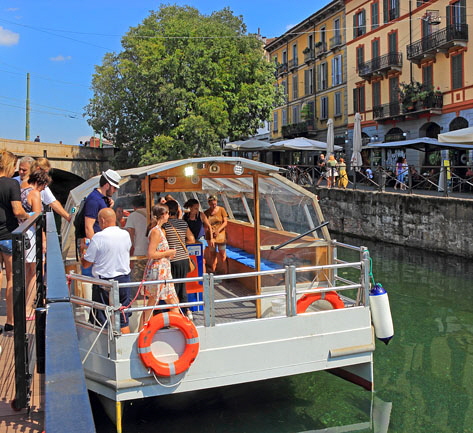
I did enjoy my time in Milan, though wished I had picked a quieter month to visit. With some of Italy’s excellent landmarks, architecture, upscale shopping, and dining - it’s easy to see what draws visitors to this city.

15 images here ©JAYTRAVELPHOTOS
© COPYRIGHT notice. The images on this site are for viewing only.
To purchase any, for personal or commercial use, please contact us at jaytravelphotos@aol.com
